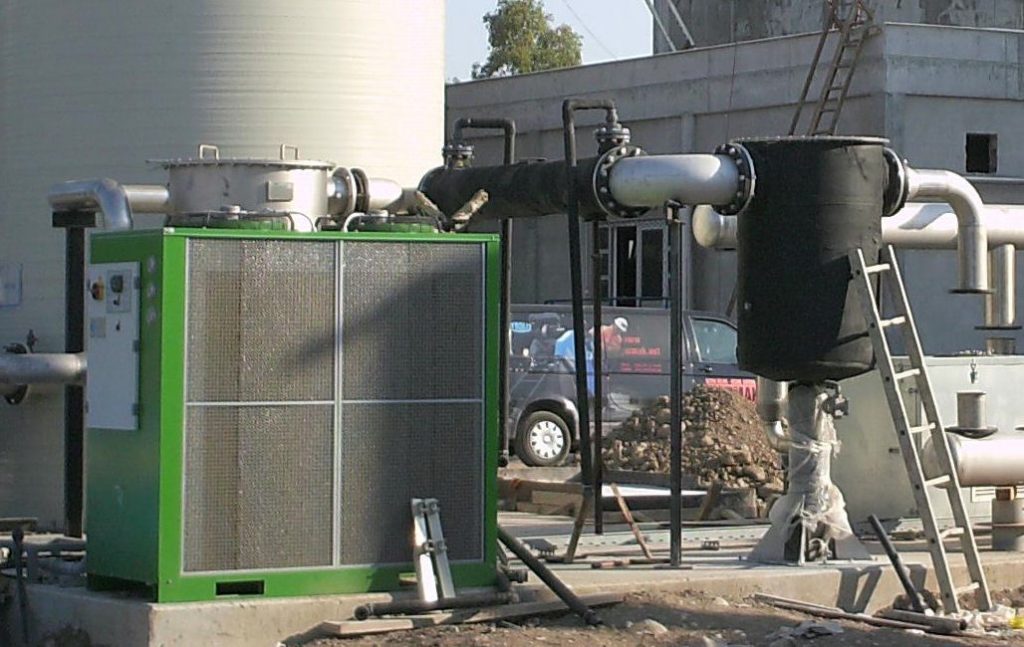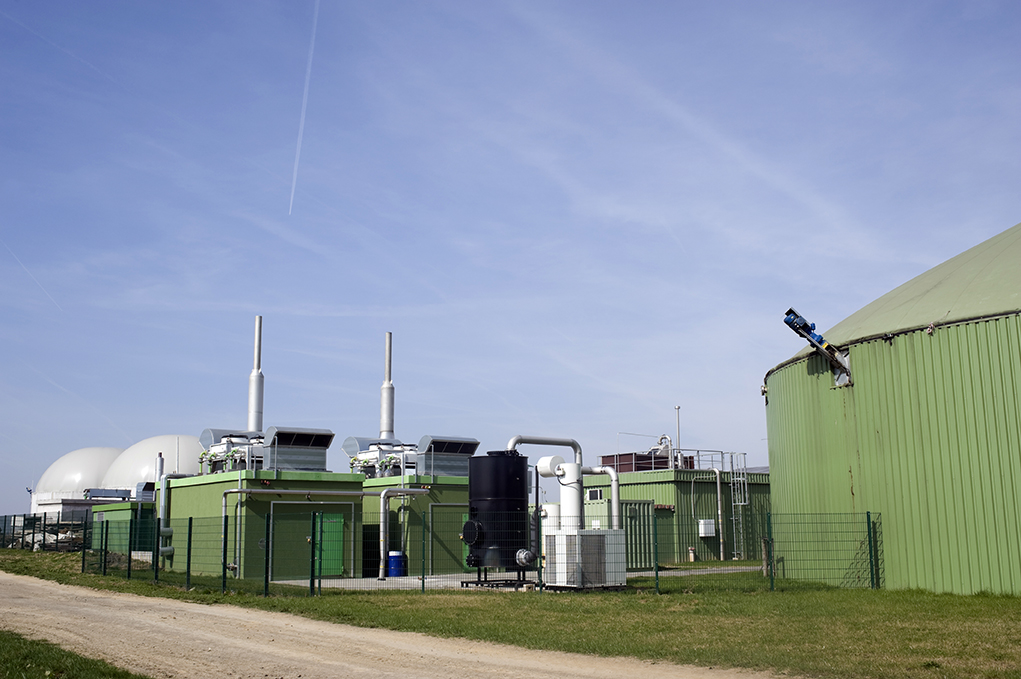Chillers are employed also in power generation applications, especially in the case of biogas plants, usually related to cogeneration. Biogas is indeed obtained from waste discharge, animal, agricultural, food or municipal waste, presenting high presence of humidity and aggressive and corrosive agents. The biogas must then be dehumidified in order to be employed in internal combustion engines, and chillers are used to cool down the biogas, eliminating corrosive condensations that can compromise the combustion process and damage the engines components.
Tempco has developed and installed a wide number of biogas dehumidification plants over the years, both in Italy and internationally. Air condensed industrial refrigerators are employed for biogas treatment, units that are special adaptations from the standard series, especially engineered and sized in order to ensure 24/7 operations during the whole year and able to work in aggressive and harsh environments. The biogas presence often means that Atex environments are involved, so that biogas conditioning plants must be realized with special corrosion protection on the condenser shell and tube heat exchanger on which the chiller works. The proper selection of materials is also very important, often stainless steel.
Standard biogas refrigerators are able to cool biogas flow rates ranging from 56 up to 6.900 m3/h. The machinery is designed to produce antifreeze solutions at the temperature of approx. 0° C, feeding shell and tube heat exchangers in biogas cooling special execution. The biogas must be cooled at a temperature low as possible and near to the antifreeze solution temperature, in order to get rid of as much as possible humidity from the biogas before in enters the cogeneration engine.
Biogas conditioning plants are usually completed by a condensate separator, avoiding even the smallest particles of water moisture to enter the engine circuit, and by a thermal energy recovery unit, perfectly matching the maximum energy efficiency concept of cogeneration applications.


